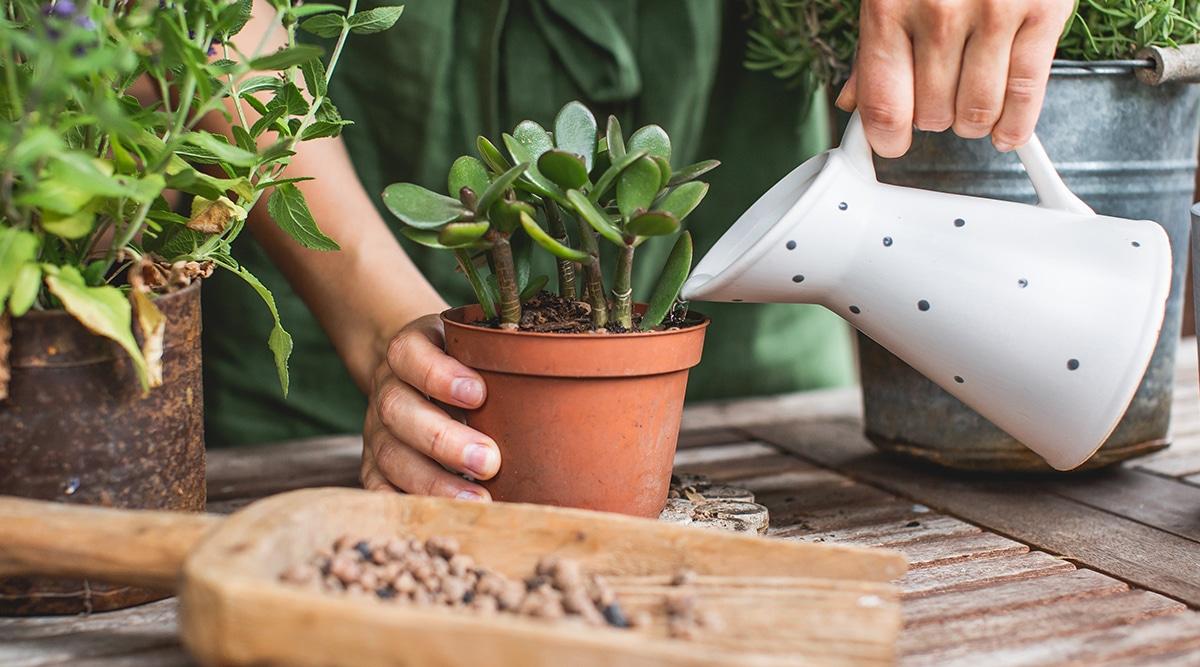Succulents are incredible plants that not only add beauty to any plant collection, but they are also easy to care for. These resilient plants can thrive in extreme conditions, making them perfect for beginners. However, even succulents are not immune to some common mistakes that gardeners make, resulting in discoloration. In this article, we will explore the most common reasons why your succulents may be turning yellow, brown, or black, and provide solutions to help save your plants.
Overwatering
The most common reason for succulent leaves turning yellow is overwatering. Succulents are native to dry regions and have adapted to survive in drought conditions by storing water in their thick leaves. If you notice yellowing leaves that feel soggy or mushy, it indicates that your plants are being watered too much. To prevent this, only water your succulents when the soil becomes dry. Make sure your pots have proper drainage holes and that they are not blocked.
Underwatering
Conversely, underwatering can also cause yellowing and browning of succulent leaves. If the leaves appear dried, shriveled, and brittle, it is a sign that your succulents are not receiving enough water. Give them a good drink once the soil becomes dry, ensuring that the water reaches the entire pot or soil profile. Remember to check your succulents regularly to determine if they need watering.
Lack Of Sunlight
Insufficient sunlight can lead to various symptoms in succulents, such as upward growth, yellowing, or pale leaves. Many succulents require sunlight to produce vibrant colors. If you believe your succulents are not getting enough sunlight, consider moving them to a brighter location. Different varieties have different sunlight requirements, so do some research to determine the optimal conditions for your specific plants.
Too Much Sunlight
While succulents love sunlight, they can also suffer from sunburn if exposed to excessive amounts. Brown spots may appear on leaves, starting as white dots and gradually turning brown. To prevent sunburn, move your succulents to a shadier area, especially during intense afternoon sunlight. If natural shade is not available, you can use a shade cloth or plant them in the shade of taller plants with similar care.
Root Rot
Root rot is a fungal disease that occurs in succulents planted in poorly draining soils. Overwatering or using unsuitable containers can cause water to become trapped, leading to root rot. Yellow to black leaves that feel mushy or soggy are signs of root rot. While root rot is irreversible, you can save your succulents by removing affected leaves and roots. To prevent root rot, provide well-draining soil for your succulents.
Pests
Pests like mealybugs and aphids can feed on the sweet sap of succulents, causing yellowing in the areas they have attacked. Pests are more likely to attack plants that are already stressed, such as those with root rot or sunburn. If you suspect a pest infestation, remove the affected plants from areas with other plants and treat them with an appropriate insecticide.
Poor Draining Soils
Succulents prefer well-draining soils with added gritty materials like sand, gravel, or pumice. These materials allow water to drain away easily, preventing standing water and increasing air circulation. Using specific succulent soils or creating your own by mixing potting soil with gritty material can ensure proper drainage. If your succulents are planted directly in the ground, amend the soil with gritty material before planting.
Nutrient Deficiency
Although succulents are not heavy feeders, they can turn yellow due to a lack of nutrients. Over time, potting soil or ground soil can become depleted, requiring the addition of fresh soil or fertilizer. Repotting your succulents with new soil is an effective solution to solve nutrient deficiency. Alternatively, you can apply fertilizer, but be mindful of proper application to avoid burning the plants.
Incorrect Containers
Choosing the right container is crucial for the health of your succulents. Opt for containers that are about 10 percent larger than the plant to allow for root and plant growth. Terracotta or ceramic pots are the best choices as they are breathable and promote proper air circulation and water drainage. Ensure your containers have drainage holes to prevent water from pooling, even if you are careful not to overwater.
Frost
If you live in colder regions, succulents left outdoors are susceptible to frost damage. Some succulents are winter hardy and can withstand cold temperatures, while others require protection. Research the temperature requirements for your specific succulent varieties. If frost is a concern, cover your plants or bring them indoors before the first frost to prevent damage.
Natural Life Cycle
As part of their natural life cycle, succulent leaves will naturally die and turn yellow, brown, or black. This is a normal process, especially for the lower leaves. The plant redirects nutrients to new leaves, resulting in the shedding of older leaves. If you notice yellowing at the bottom of your succulent, it is a sign of new leaf growth. Brown leaves around flowering are also common as nutrients are transferred to the flowers.
By understanding these common reasons for succulent discoloration and implementing the appropriate solutions, you can help your plants thrive and prevent them from dying. Remember to adjust watering, sunlight, soil, and container conditions to meet the specific needs of your succulents. With proper care, you can enjoy vibrant and healthy succulents in your indoor or outdoor garden.












